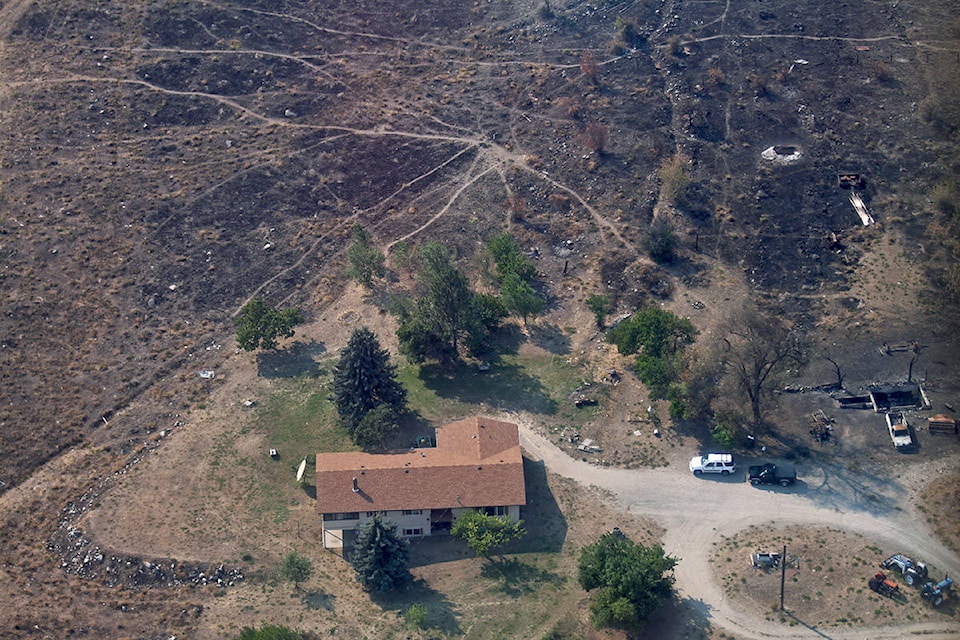My time at the Western News in 2018 was brief, having only joined the team mid-August, but I did have the opportunity to cover an especially important story that I’d like to highlight at this year’s end.
BC Wildfire Services (BCWS) reached out and invited me on a helicopter tour of some of the ongoing wildfires in early September. Their communications team wanted to use the opportunity to show off some of the wins they had this season with some of the larger wildfires in the area, which led to my story ‘Myths and facts about fighting B.C. wildfires’ in our Sept. 5 edition.
Related: Myths and facts about fighting B.C. wildfires
I jumped at the chance to cover this — and not just because I had never been in a helicopter before — but because at this time, we were just coming down from a hellish summer that saw the skies turn to grey and brown and the hillsides swallowed by flames. Those here in the summer will remember the numerous air quality warnings that were issued, the highway closures and evacuations, and flames that seemed to lick at every corner of the region.
| Steep and loose terrain challenged crews as they battled the Snowy Mountain Wildfire. The blaze covered 17,670 hectares and took two months to control. Jordyn Thomson/Western News |
The team first took me over one of the more notorious fires in the region, the Snowy Mountain wildfire. This blaze began July 17, is still on the wildfires of note list and spans 19,226 hectares, challenging crews with steep and treacherous terrains.
Stephen Kada, an Australia-native who worked as a wildfire information officer with BCWS over the summer, explained that much of their efforts of fire suppression on Snowy Mountain involved helicopters making bucket drops. Depending on the distance to the nearest water source, these helicopters made 50 to 60 drops a day.
Related: Wildfire mitigation work helps restore sheep habitat in South Okanagan
We toured above the Old Tom Creek wildfire, which spanned 1,380 hectares and began on Aug. 15. As of Sept. 13, BCWS listed the Old Tom Creek wildfire as under control, again meaning that this battle was ongoing for nearly a month. It should be mentioned that throughout the wildfire season in B.C., firefighters worked shifts of two weeks on and three days off, usually putting in more than 12 hours per day.
| The Old Tom Creek wildfire began on July 15 and took nearly one month to control. It spanned 1,380 hectares. Jordyn Thomson/Western News |
Related: Caution urged as people head back into wildfire affected areas in B.C.
Finally our tour took us over the Cool Creek wildfire, which started on Aug. 15 and spanned 13,626 hectares. At the time, this fire was still classified as out of control and it’s widespread reaches challenged teams.
As of Sept. 16, BCWS listed the Cool Creek Wildfire under control, meaning it also took crews a month to all-but extinguish this blaze. For those curious, all three of these wildfires were started by lightning.
So in this area alone, crews had to battle not one, not two, but three ongoing wildfires at the same time. I cannot imagine the stress and pressure they must have felt, as our only line of defence from fire sweeping into communities and destroying homes and livelihoods.
| At the time of this helicopter tour, the Cool Creek wildfire was still listed as out of control by BCWS. This fire burned for nearly a month and spanned 13,626 hectares. Jordyn Thomson/Western News |
Enough cannot be said about all the courageous firefighters who volunteered their time and put their safety on the line to fight these fires. Thousands of people from dozens of organizations (local, provincial, national and international) came together to help this province in a time of crisis, and to them we are indebted.
So take a moment this holiday season to remember what this area looked like in the summer months, and be thankful these brave men and women answered the call in our time of need. And I’m sure they will be around next summer to answer the call when the inevitable wildfire season begins again.
To report a typo, email: editor@pentictonwesternnews.com.
<>Jordyn Thomson | Reporter
JordynThomson
Send Jordyn Thomson an email.
Like the Western News on Facebook.
Follow us on Twitter.
